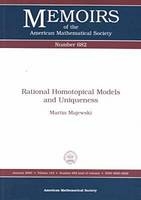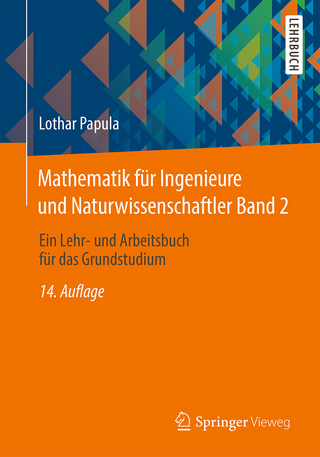
Rational Homotopical Models and Uniqueness
1999
American Mathematical Society (Verlag)
978-0-8218-1920-3 (ISBN)
American Mathematical Society (Verlag)
978-0-8218-1920-3 (ISBN)
- Titel ist leider vergriffen;
keine Neuauflage - Artikel merken
Intends to prove the following conjecture of Baues and Lemaire: the differential graded Lie algebra associated with the Sullivan model of a space is homotopy equivalent to its Quillen model. This title also shows the same for the cellular Lie algebra model which it builds from the simplicial analog of the classical Adams-Hilton model.
The main goal of this paper is to prove the following conjecture of Baues and Lemaire: the differential graded Lie algebra associated with the Sullivan model of a space is homotopy equivalent to its Quillen model. In addition we show the same for the cellular Lie algebra model which we build from the simplicial analog of the classical Adams-Hilton model. It turns out that this cellular Lie algebra model is one link in a chain of models connecting the models of Quillen and Sullivan. The key result which makes all this possible is Anick's correspondence between differential graded Lie algebras and Hopf algebras up to homotopy. In addition we show that the Quillen model is a rational homotopical equivalence, and we conclude the same for the other models using our main result. The construction of the three models is given in detail. The background from homotopy theory, differential algebra, and algebra is presented in great generality.
The main goal of this paper is to prove the following conjecture of Baues and Lemaire: the differential graded Lie algebra associated with the Sullivan model of a space is homotopy equivalent to its Quillen model. In addition we show the same for the cellular Lie algebra model which we build from the simplicial analog of the classical Adams-Hilton model. It turns out that this cellular Lie algebra model is one link in a chain of models connecting the models of Quillen and Sullivan. The key result which makes all this possible is Anick's correspondence between differential graded Lie algebras and Hopf algebras up to homotopy. In addition we show that the Quillen model is a rational homotopical equivalence, and we conclude the same for the other models using our main result. The construction of the three models is given in detail. The background from homotopy theory, differential algebra, and algebra is presented in great generality.
Introduction Homotopy theory Differential algebra Complete algebra Three models for spaces Notations Bibliography.
| Erscheint lt. Verlag | 1.1.2000 |
|---|---|
| Reihe/Serie | Memoirs of the American Mathematical Society |
| Zusatzinfo | bibliography |
| Verlagsort | Providence |
| Sprache | englisch |
| Themenwelt | Mathematik / Informatik ► Mathematik ► Algebra |
| Mathematik / Informatik ► Mathematik ► Geometrie / Topologie | |
| ISBN-10 | 0-8218-1920-8 / 0821819208 |
| ISBN-13 | 978-0-8218-1920-3 / 9780821819203 |
| Zustand | Neuware |
| Haben Sie eine Frage zum Produkt? |
Mehr entdecken
aus dem Bereich
aus dem Bereich
Buch | Softcover (2015)
Springer Vieweg (Verlag)
37,99 €


